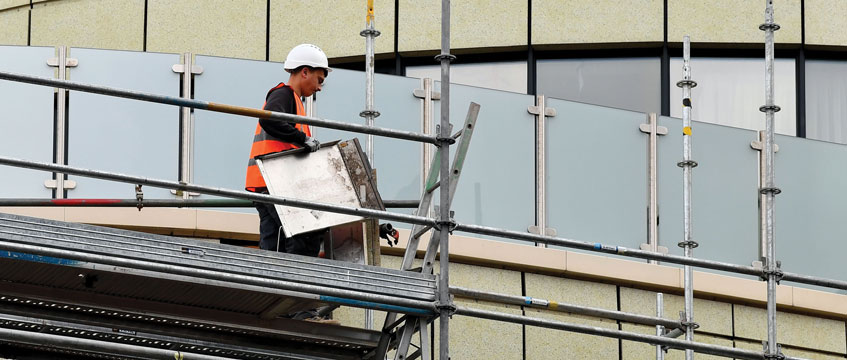In the very first paragraph of his judgment in Mulalley & Co Ltd v Martlet Homes Ltd [2022] EWCA Civ 32; [2022] PLSCS 16, Coulson LJ says of the case that “the result may be of some significance to the construction industry”.
Martlet owns five high-rise towers in Gosport. Mulalley designed and built the towers between 2005 and 2008. The cladding used – known as the STO Therm system – contained expanded polystyrene (EPS) as wall insulation. EPS is combustible.
Following the Grenfell Tower fire in 2017, Martlet carried out checks on the towers and found significant fire safety defects. When it commenced proceedings against Mulalley, limitation had expired in relation to one of the towers. The claims in relation to the remaining four were brought in time.
The original pleading alleged poor workmanship (and some inadequate design) resulting in failed fire protection. Martlet sought to recover the costs of removing and replacing the STO system. Mulalley denied all of the allegations. While it accepted that the STO system and EPS did not comply with the building regulations in force in July 2017, Mulalley argued that they did comply with the regulations in force when the towers were designed and constructed. Mulalley relied on a certificate issued in 1995 by the British Board of Agrément to argue that the STO system was compliant. It argued that the cause of Martlet’s loss was the need to comply with the change in regulations following the Grenfell tragedy and not the result of any breach of its contract.
The amended claim
Martlet sought to amend its particulars of claim by arguing that STO and EPS “did not adequately resist the spread of fire over the walls from one building to another, having regard to the height, use and position of those buildings” contrary to the Building Regulations 2000 – that is, those in force when the towers were designed and built. Mulalley objected to the amendments, arguing that they created a new cause of action which had been issued after the relevant contractual limitation periods for claims regarding the four towers had expired.
The law
The key issue for Pepperall J at first instance ([2021] EWHC 296 (TCC)) and the Court of Appeal was the correct application of section 35 of the Limitation Act 1980 as given effect by CPR 17.4. There are four questions to consider when applying CPR 17.4:
1. Is it reasonably arguable that the amendments are outside the limitation period?
2. Do the proposed amendments seek to add or substitute a new cause of action?
3. Does (and this question reflects the actual wording in CPR 17.4) the new cause of action arise out of the same or substantially the same facts already in issue in the existing claim?
4. Should the court exercise its discretion to allow the amendment?
There was no doubt about question 1 – the amendments were outside the limitation period. And the parties agreed that if the correct answer to questions 2 and 3 was yes then, as Pepperall J had done, the court should allow the amendment.
When considering what constitutes a new cause of action, Coulson LJ was influenced by Tomlinson LJ’s judgment in Co-operative Group Ltd v Birse Developments Ltd and another [2013] EWCA Civ 474; [2013] PLSCS 88, which stressed the need to compare the essential factual elements of the cause of action already pleaded with those of the cause of action proposed. A change in those essential elements means that a new cause of action is being introduced.
As for deciding whether a pleading was based on the same or substantially the same facts, Coulson LJ referred to cases dealing with both the general question and its particular application where the claimant alleges that the new claim arises out of facts first put in issue in the defence. In Goode v Martin [2001] EWCA Civ 1899, the key test was whether the facts were already in issue in the claim as originally pleaded. The judge also referred to Brickfield Properties v Newton [1971] 1 WLR 862, a Court of Appeal decision that stressed that while there has to be sufficient overlap, that overlap does not have to be total. In Brickfield, a change in pleading from an architect’s poor supervision of the contractor’s defective workmanship to one focusing on the architect’s negligent design did arise out of substantially the same facts, notwithstanding the fact that different investigation was needed to assess the adequacy of that design as opposed to the adequacy of the supervision.
The decision
Three points – the original case was pleaded on a contingent basis, focused more on workmanship than design, and had a different nature, scope and extent to the amended claim – meant that Coulson LJ agreed that the amended pleading did constitute a new cause of action.
The judge also agreed that the amended claim arose out of the same or substantially the same facts: essentially whether the STO Therm system in general and EPS in particular was defective and needed to be replaced. While the original claim focused more on workmanship than design, there was, following Brickfield, sufficient factual overlap to allow the amended pleading, not least because the selection of combustible insulation was a central issue to both pleadings.
What next?
Coulson LJ acknowledged that the “issue that arises here is an important one and may, post-Grenfell, be replicated in analogous situations at blocks of flats across the country”. The fact that the building regulations changed following Grenfell may not be fatal, from a limitation perspective, to claimants amending existing pleadings dealing with combustible insulation.
Stuart Pemble is a partner at Mills & Reeve








